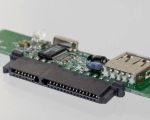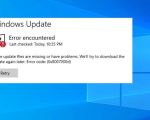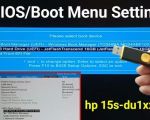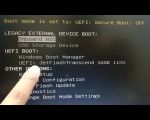Understanding Startup Repair on Your Computer: A Step-by-Step Guide
Have you ever faced the frustration of your computer not starting up properly? It’s one of those moments when you feel a sense of panic creeping in as you wonder what’s wrong with your device. If you’ve encountered this issue, then you’ve likely come across the term "startup repair." But what exactly does this mean, and how can it help you get your computer back up and running?
In this article, I’ll walk you through what startup repair is, how it works, and how you can use it to resolve common startup problems on your computer. Whether you’re dealing with a Windows machine or other systems, understanding the startup repair process is a key step in troubleshooting issues and minimizing downtime. If you’ve ever found yourself wondering, “Why isn’t my computer booting up?” or “What’s going on when Windows can’t start?” you’re in the right place to find some answers.

Best Buy
4210 Centerplace Dr, Greeley, CO 80634, USA
1. What is Startup Repair?
Startup Repair is a diagnostic tool that is built into the Windows operating system to automatically fix problems that prevent your computer from starting properly. The tool is designed to identify and repair issues related to the system files, configurations, or drivers that may be interfering with the boot process. Essentially, it’s a first-line solution that automatically scans for common problems and attempts to fix them, without requiring you to manually intervene.
When you start up your computer and it encounters a problem—whether it's a missing file, corrupted system configuration, or a software conflict—startup repair kicks in. It’s especially helpful for when your computer is stuck in a boot loop, shows a “blue screen of death,” or gets caught in an endless restart cycle. Rather than scrambling to find a manual fix, the startup repair tool offers a straightforward, automated solution.
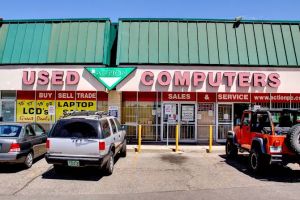
Action Computers Inc. -- Denver Location
2890 S Colorado Blvd F, Denver, CO 80222, USA
2. How to Access Startup Repair
Accessing the startup repair tool can vary slightly depending on your version of Windows, but the process is generally similar. I’ve gone through this process a few times myself and have learned that understanding how to access it can save you a lot of frustration. Here's how you can access startup repair in Windows:
- For Windows 10 or 11: Restart your computer and interrupt the boot process three times by pressing the power button during startup. On the fourth restart, Windows will automatically load the recovery environment. From there, you can select "Troubleshoot," then "Advanced options," and finally click on "Startup Repair."
- For older versions of Windows: If you have a Windows installation disk or recovery drive, you can boot from it, select "Repair your computer," and navigate to the "Startup Repair" tool in the recovery options.
It’s as simple as following the prompts and letting Windows handle the troubleshooting. The best part? You don’t need to be a tech expert to use it. Once you’ve selected the repair option, Windows will automatically attempt to detect and fix any startup problems.
3. What Problems Can Startup Repair Fix?
While startup repair isn’t a magic fix-all tool, it can resolve a wide range of issues that affect your computer’s ability to boot up. In my experience, it’s helped with problems such as:
- Corrupted or Missing System Files: If critical system files that are needed to boot your computer are corrupted or missing, startup repair can often restore them.
- Incorrect Startup Settings: If your computer’s boot configuration is incorrect (such as an improperly configured bootloader), startup repair can help reset the necessary settings.
- Faulty Drivers: Sometimes, incompatible or outdated drivers can prevent your computer from booting properly. Startup repair scans for and fixes these issues.
- Disk Errors: If your computer has hard drive errors or bad sectors, startup repair can sometimes fix those by checking the disk for issues.
However, it's important to note that startup repair isn’t capable of fixing all problems. If your hard drive is physically damaged, or if you have a deeper hardware issue, startup repair might not be able to help. In these cases, seeking professional help may be necessary. But for most common issues, startup repair is a great first step.
4. What to Do If Startup Repair Doesn’t Work
There have been times when startup repair didn’t work for me, leaving me feeling a bit helpless. If startup repair fails to fix the issue or if it can’t identify the problem, don’t panic. There are still other troubleshooting methods to try:
- Run System File Checker (SFC): You can use the SFC command to scan and repair corrupted system files manually. This can be done from the Command Prompt in the Advanced options menu of the recovery environment.
- Use System Restore: If you have created a restore point before the issue occurred, you can use the System Restore tool to revert your computer back to a previous state when everything was working fine.
- Reinstall Windows: If all else fails, reinstalling Windows can often resolve deeper system issues, though it will require you to back up your files beforehand.
While these solutions require more effort than running startup repair, they can often solve problems that the automatic tool can’t handle. If you’re unsure about performing these tasks on your own, it’s always a good idea to consult with a professional technician.
5. How to Prevent Startup Problems in the Future
One of the most important lessons I’ve learned is that preventing problems before they arise is key to keeping your computer running smoothly. Here are a few proactive steps that I’ve taken to avoid startup issues:
- Regularly Update Your System: Keep your operating system and software up to date to ensure you have the latest security patches and bug fixes.
- Backup Your Files: Always create regular backups of your important files so that if a problem does arise, you won’t lose valuable data.
- Run Disk Cleanup: Regularly running disk cleanup and defragmentation can help keep your computer’s performance optimized and prevent disk errors.
- Install Antivirus Software: A good antivirus program can help prevent malware infections that might affect your computer’s startup process.
Taking these steps can go a long way in preventing startup issues and minimizing the need for troubleshooting in the future.
6. When to Seek Professional Help
While startup repair is a great tool for many situations, there are times when professional help is needed. If your computer still won’t start after using startup repair and other troubleshooting methods, it could be a sign of a more serious issue, such as a failing hard drive or motherboard. In these cases, consulting with a professional technician is the best option.
Remember, regular maintenance and monitoring can help keep your computer in tip-top shape. But when problems arise, tools like startup repair can offer a quick and efficient solution.















